I’ll be completely honest from the start, when I first heard about “Blades of Fire,” my immediate reaction was that it sounded like a budget mobile game or some hastily cobbled-together indie title. The name genuinely put me off, conjuring images of generic fantasy nonsense with zero personality. How wrong I was. After spending many hours in MercurySteam’s meticulously crafted world, I can confidently say that this is one of the most visually stunning and mechanically satisfying action RPGs I’ve played in years, even if the title still makes me cringe slightly.
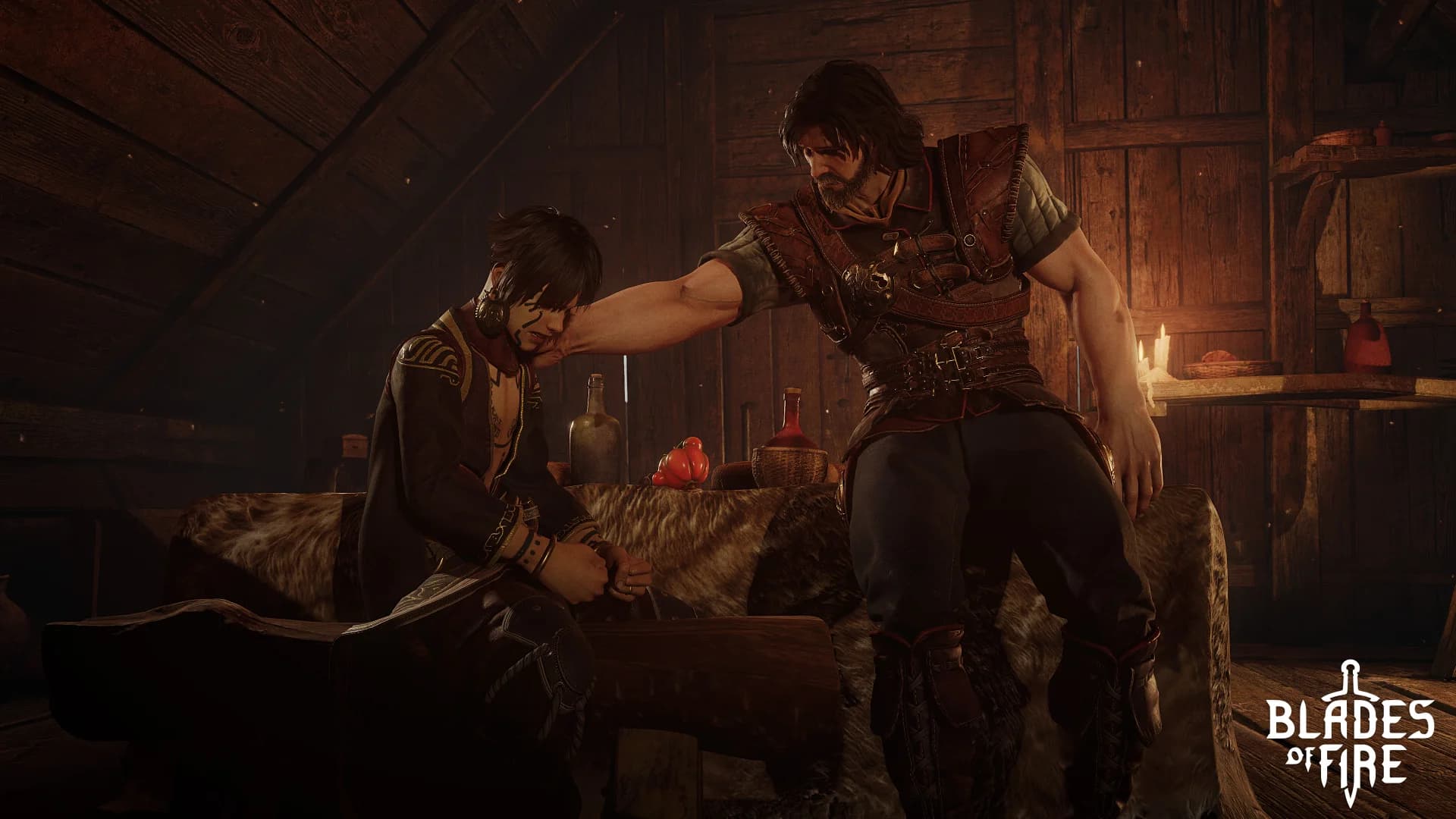
A Visual Masterpiece That Demands Attention
Let me start with what immediately grabbed me: Blades of Fire is absolutely gorgeous. This isn’t hyperbole, MercurySteam has created a fantasy world that looks like concept art brought to life. Running on Xbox Series X, the game maintains a rock-solid 60fps whilst delivering environments that genuinely made me stop and stare. The lighting effects, particularly during the forging sequences, are spectacular. Watching molten metal glow against the backdrop of ancient forges whilst sparks dance through the air creates moments of genuine beauty.
The character animations are equally impressive. Aran, our muscle-bound protagonist, moves with a weighty confidence that makes every swing of his massive weapons feel impactful. Even the smaller details shine, the way fabric moves in the wind, how water reflects light in underground caverns, the particle effects when weapons clash against armour. This is the kind of visual fidelity that makes you appreciate having a current-generation console.
What struck me most was the game’s commitment to its dark fantasy aesthetic. Drawing clear inspiration from ’80s fantasy films like Excalibur and Labyrinth, Blades of Fire creates a world that feels both mythical and grounded. The colour palette shifts dramatically between areas, from the warm oranges and reds of forge-towns to the cool blues and greys of corrupted landscapes, each region feeling distinct and purposeful.
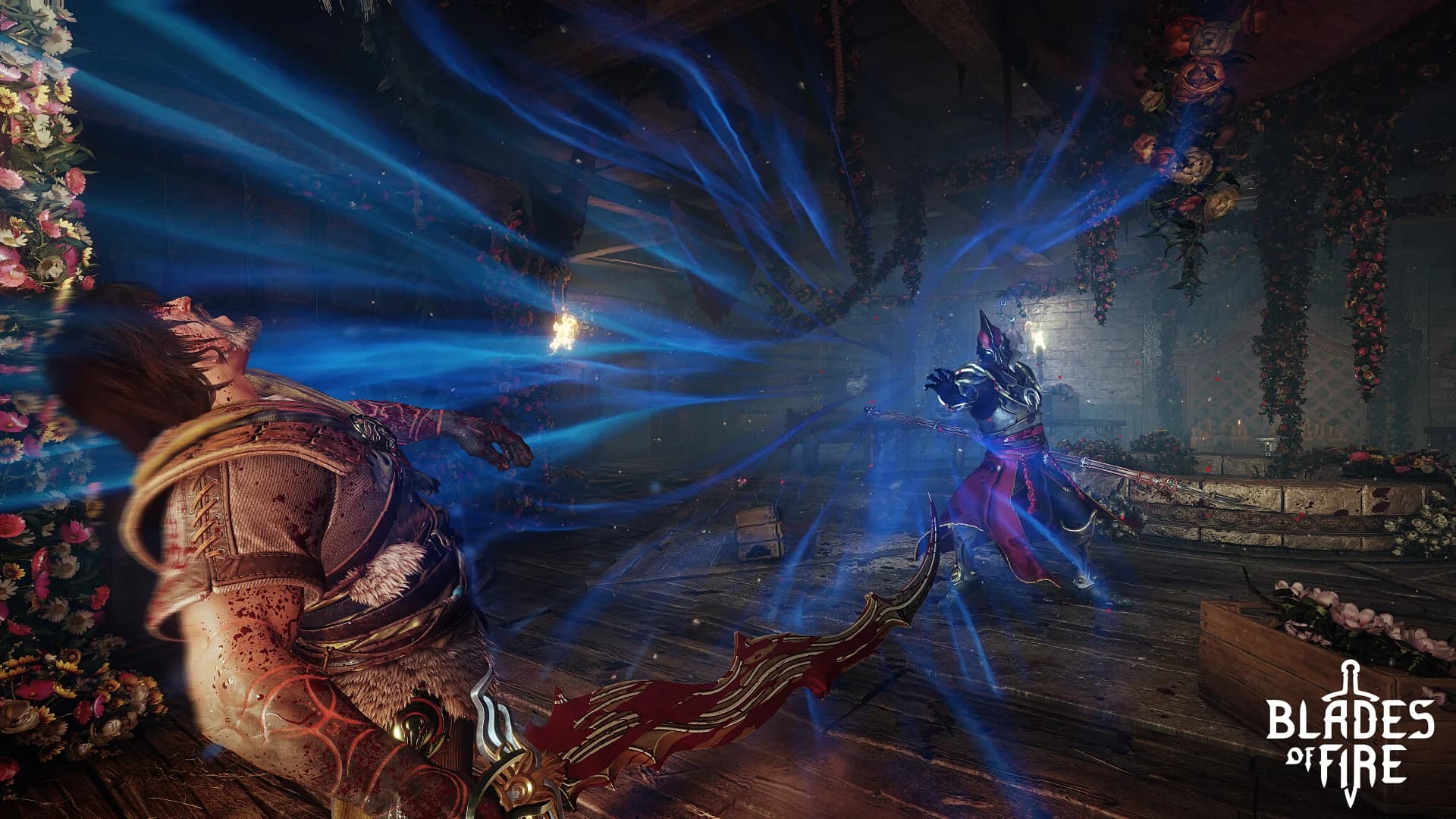
Combat That Demands Respect
Now, let’s address the elephant in the room: Blades of Fire is hard. Not artificially difficult in the way that some games punish players for existing, but challenging in a way that demands you understand and respect its systems. This isn’t a game you can button-mash your way through, and that’s precisely what makes it brilliant.
The combat system centres around a four-way targeting mechanic that initially feels overwhelming but gradually becomes second nature. Each enemy has vulnerable spots… head, left arm, right arm, and torso mapped to your controller’s face buttons. Different weapons excel against different armour types, and knowing when to switch from a slashing sword to a piercing spear can mean the difference between victory and a frustrating death.
During my early hours, I died repeatedly to what seemed like basic enemies. Skeletons that should have been cannon fodder were systematically dismantling me because I was using the wrong weapon type or attacking resistant armour. It was infuriating until that magical moment when everything clicked. Suddenly, I was reading enemy weaknesses like a book, switching between weapons mid-combat, and feeling genuinely skilled rather than lucky.
The stamina system adds another layer of tactical depth. Unlike many action games where stamina feels like an arbitrary limitation, here it becomes part of the rhythm of combat. Learning when to press attacks and when to adopt a defensive stance to recover becomes essential, especially during the game’s spectacular boss encounters.
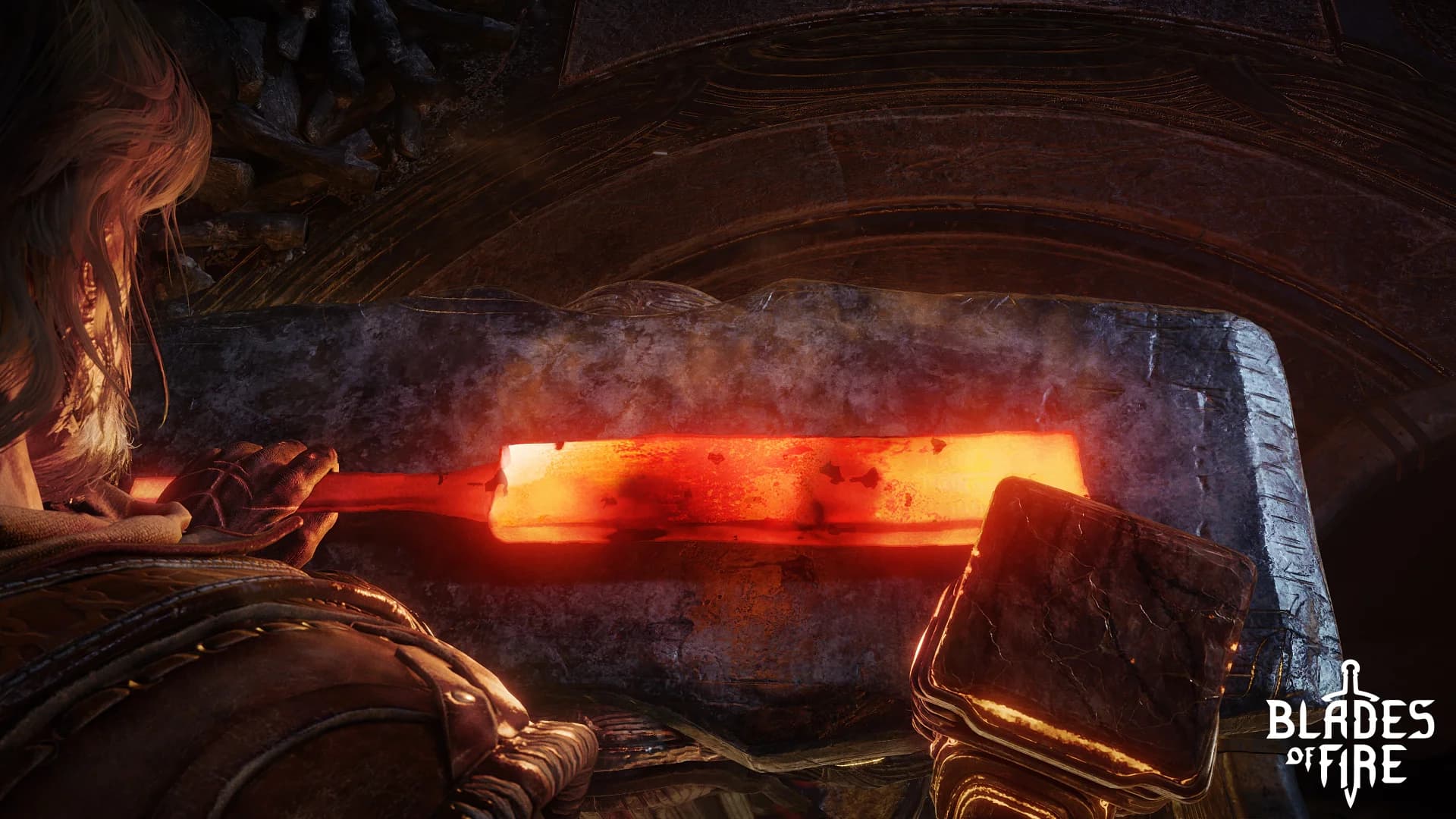
The Art of War… and Blacksmithing
Blades of Fire’s most unique feature is its weapon crafting system, and honestly, it’s a bit of a mixed bag. Every weapon you use (except your starting equipment) must be forged by your own hand. You’ll choose materials that affect stats, select blade shapes that determine weapon type, and then engage in a surprisingly involved mini-game to hammer your creation into existence.
The forging mini-game itself is tedious, there’s no getting around that. You’re essentially playing a precision timing game, trying to match bars to specific patterns to determine your weapon’s quality. Higher quality means more potential repairs before the weapon becomes unusable. It’s not fun, but it serves the story and creates a genuine connection to your equipment that most RPGs lack.
What makes this system work despite its flaws is the meaningful impact of your choices. The materials you select dramatically affect weapon performance, durability, and cost to maintain. A weapon forged from common iron might be cheap to repair but lacks the stopping power needed for tougher enemies. Meanwhile, that beautifully crafted mithril blade might devastate foes but cost a fortune to maintain.
Weapon durability initially frustrated me beyond measure. Seeing a perfectly good sword become dull after a few encounters felt punitive, especially early on when resources are scarce. However, as I progressed and understood the system better, I began to appreciate how it encourages weapon variety and tactical thinking. You can’t rely on one favourite weapon, you need a toolkit.
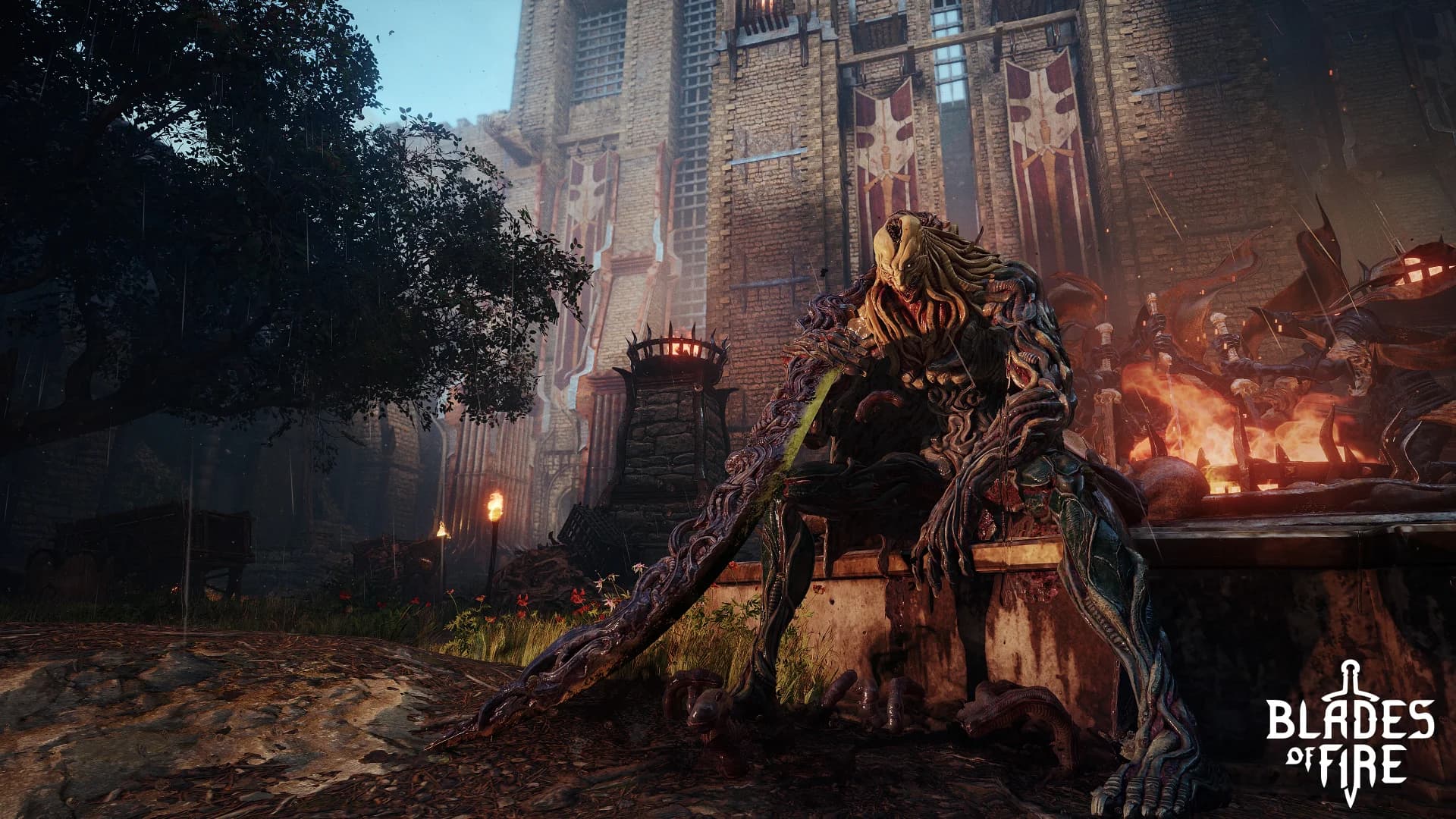
A World Worth Getting Lost In
The exploration in Blades of Fire is both its greatest strength and its most significant weakness. MercurySteam has created a genuinely vast world filled with secrets, hidden paths, and optional areas that reward curious players. The interconnected level design recalls the best Metroidvania games, with new abilities gradually opening previously inaccessible areas.
However, the navigation can be absolutely maddening. The in-game map is practically useless, providing little indication of where you’ve been or where you need to go. I spent embarrassing amounts of time wandering through labyrinthine castle corridors, searching for the one door I’d missed or the secret passage that would let me progress. There were moments where I genuinely considered looking up a guide, something I rarely do on first playthroughs.
Despite these frustrations, the world itself is compelling enough to keep you exploring. Environmental storytelling is excellent, you can read the history of this cursed land in the architecture, the placement of enemies, and the scattered lore books. The backstory about a mad queen turning all steel to stone, leaving humanity defenceless, creates a fascinating premise that the game explores through both gameplay and narrative.
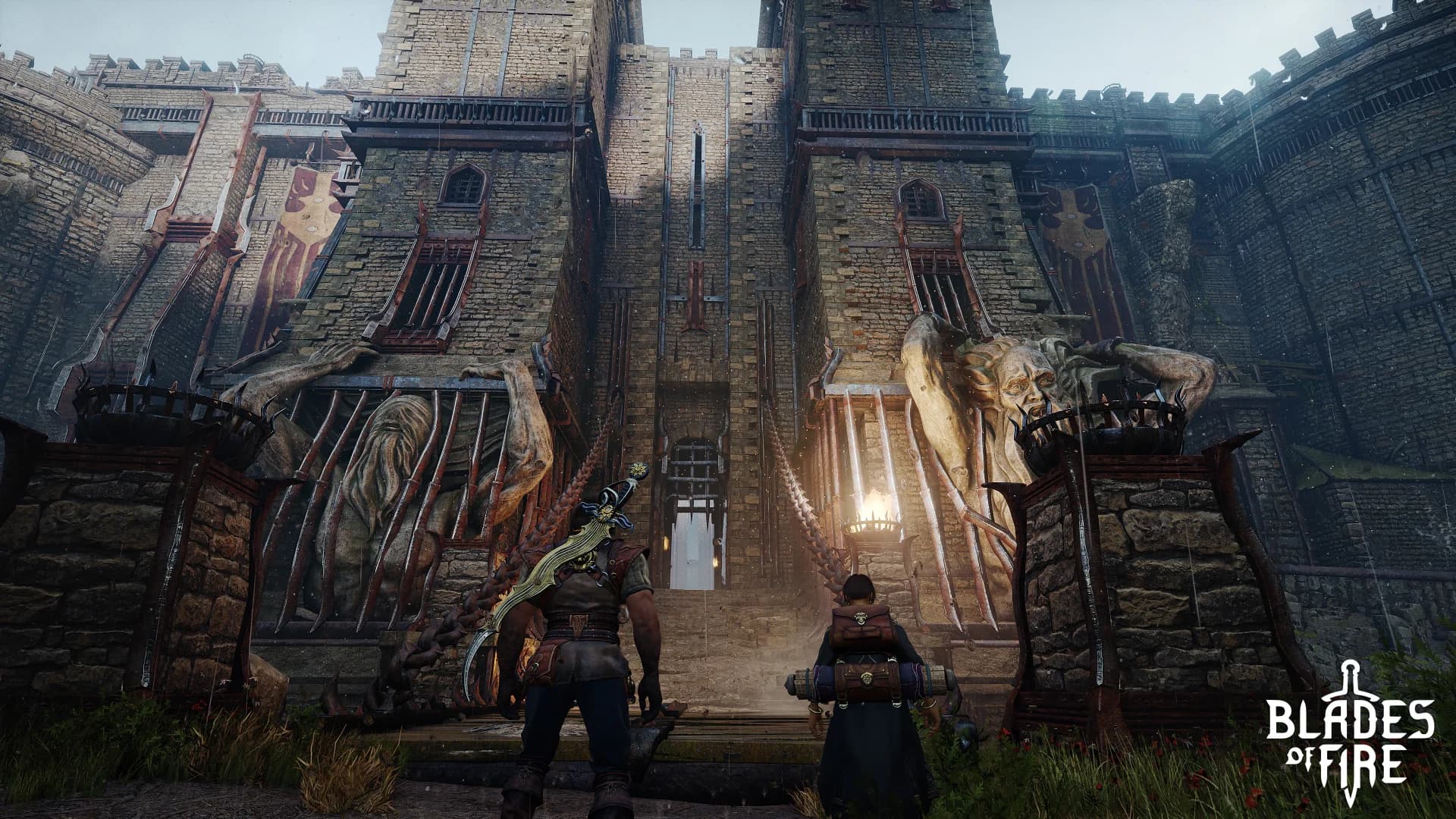
Characters Worth Caring About
Aran might look like every generic fantasy protagonist ever created, but his relationship with companion Adso provides genuine heart to the adventure. Their banter feels natural rather than forced, and watching their friendship develop over the course of the journey adds emotional weight to the proceedings.
The supporting cast, whilst limited, makes strong impressions. Glinda, the former Master Forger who wants nothing to do with your quest, provides some of the game’s best dialogue. The various NPCs you encounter feel like real people with their own concerns rather than quest-dispensing machines.
The voice acting deserves special mention, the English dub is genuinely excellent, with performances that bring personality to what could have been stock fantasy characters. My only complaint is the repetitive nature of some combat dialogue, where certain phrases get repeated far too often during extended play sessions.
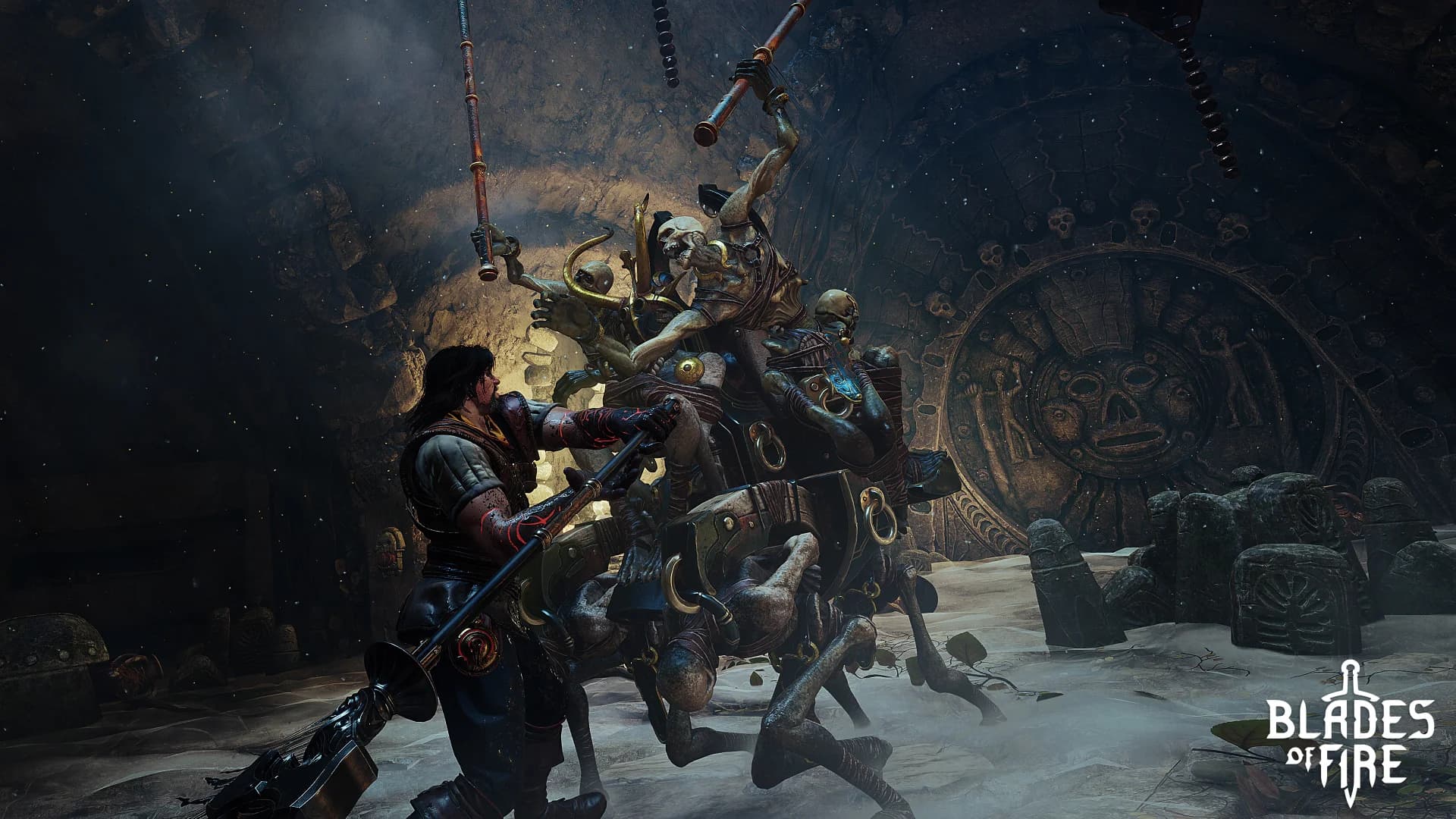
Technical Excellence Meets Design Frustrations
From a technical standpoint, Blades of Fire is remarkably solid. During my 50+ hour playthrough, I encountered minimal bugs and no crashes. The frame rate remained stable even during the most chaotic boss battles, and loading times are mercifully short on Xbox Series X.
The audio design complements the visuals beautifully. The clang of metal on metal during combat, the roar of forge fires, and the ambient sounds of a world in decay all contribute to an immersive experience. The musical score strikes the right balance between epic and melancholic, perfectly matching the game’s tone.
However, some design choices continue to baffle me. The decision to respawn all enemies when you rest at an anvil (the game’s equivalent of bonfires) creates tedious backtracking scenarios. The lack of jumping or climbing outside of specific prompt areas makes the world feel unnecessarily restrictive. These aren’t game-breaking issues, but they do create friction that could have been avoided.
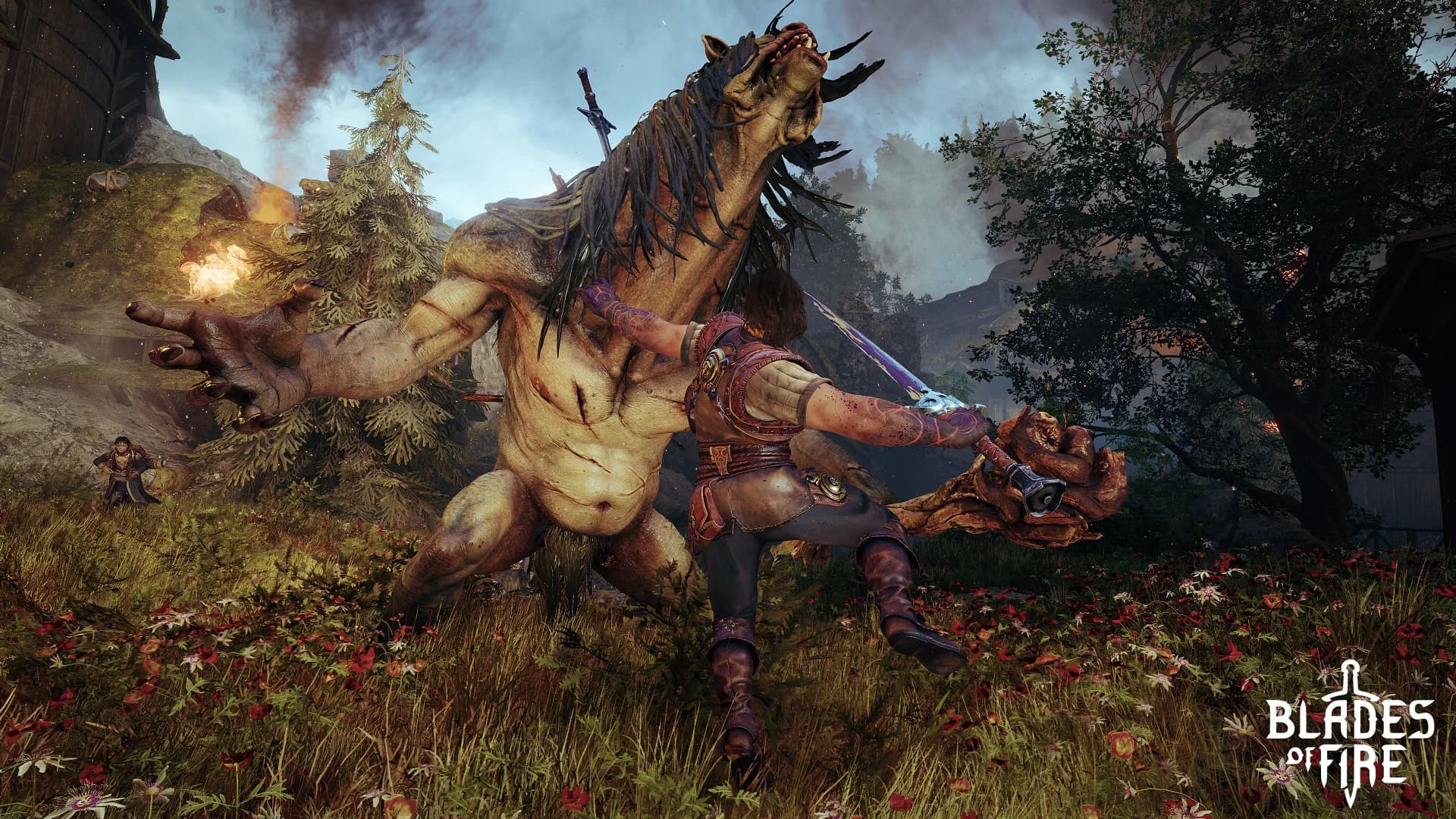
While Blades of Fire clearly draws inspiration from Dark Souls and its ilk, it carves out its own identity through the weapon crafting system and unique combat mechanics. The penalty for death… losing your equipped weapon rather than souls or experience, creates different risk calculations. Do you venture forth with your best weapon, knowing you might lose it? Or do you play it safe with backup equipment?
This creates interesting strategic decisions that feel fresh even for veterans of the souls-like genre. The game never feels derivative, despite obvious influences. MercurySteam has taken familiar elements and crafted something that feels distinctly their own.
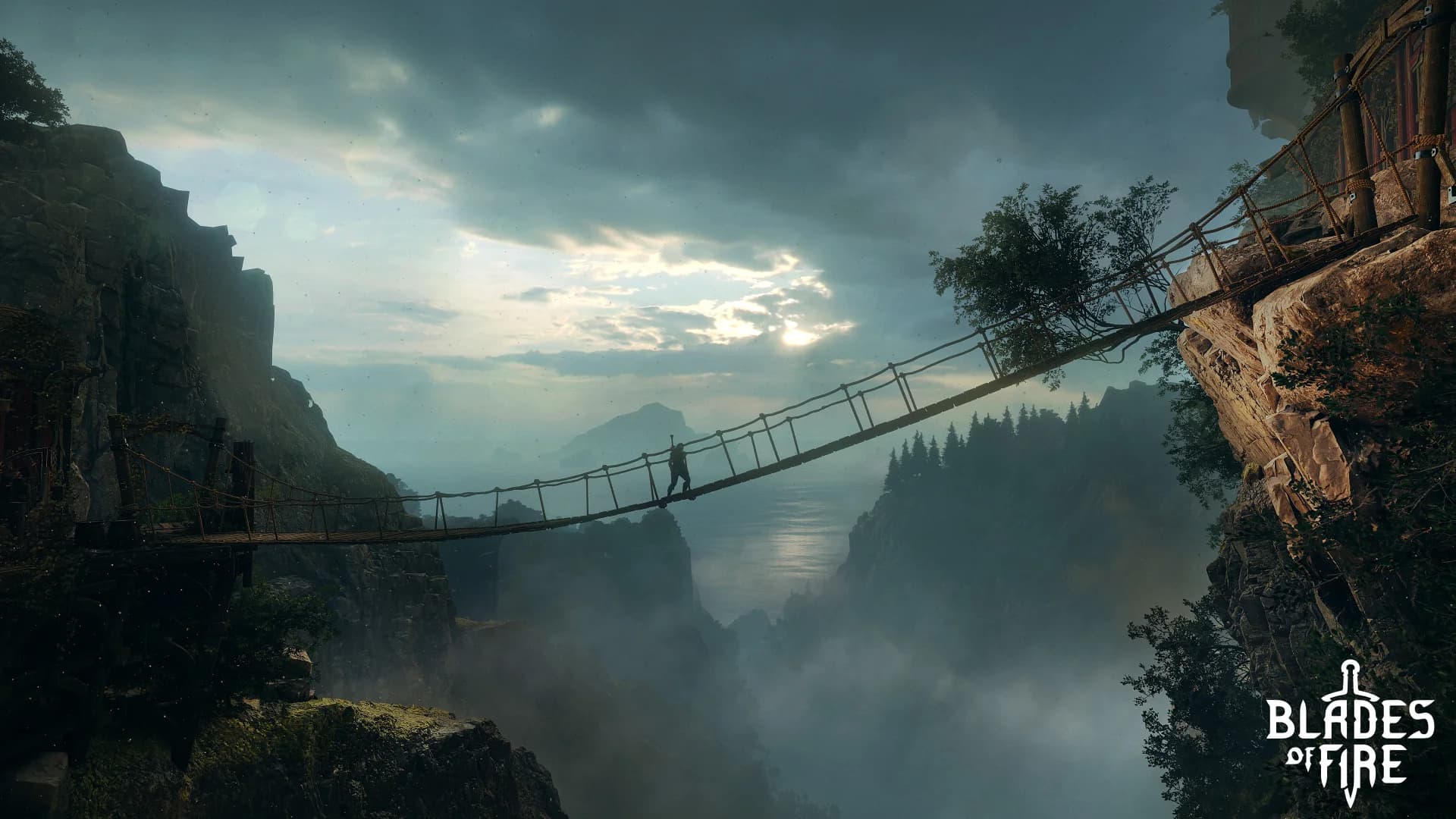
Final thoughts…
Blades of Fire is a game that almost defeated me in its opening hours. The combination of punishing difficulty, obtuse navigation, and tedious crafting mechanics nearly convinced me this was an ambitious failure. But somewhere around the ten-hour mark, everything began to gel. The combat system revealed its depth, the world opened up in meaningful ways, and I found myself genuinely invested in Aran’s quest.
This isn’t a game for everyone. If you’re looking for a breezy adventure or instant gratification, look elsewhere. Blades of Fire demands patience, persistence, and a willingness to engage with its systems on their own terms. But for those willing to put in the effort, it rewards you with one of the most satisfying action RPG experiences in recent memory.
The terrible name might make it sound like budget shovelware, but don’t let that fool you. MercurySteam has created something special here, a beautiful, challenging, and ultimately rewarding fantasy adventure that proves original IPs can still surprise us. Despite its flaws, Blades of Fire has forged itself a place among my favourite games of the year.
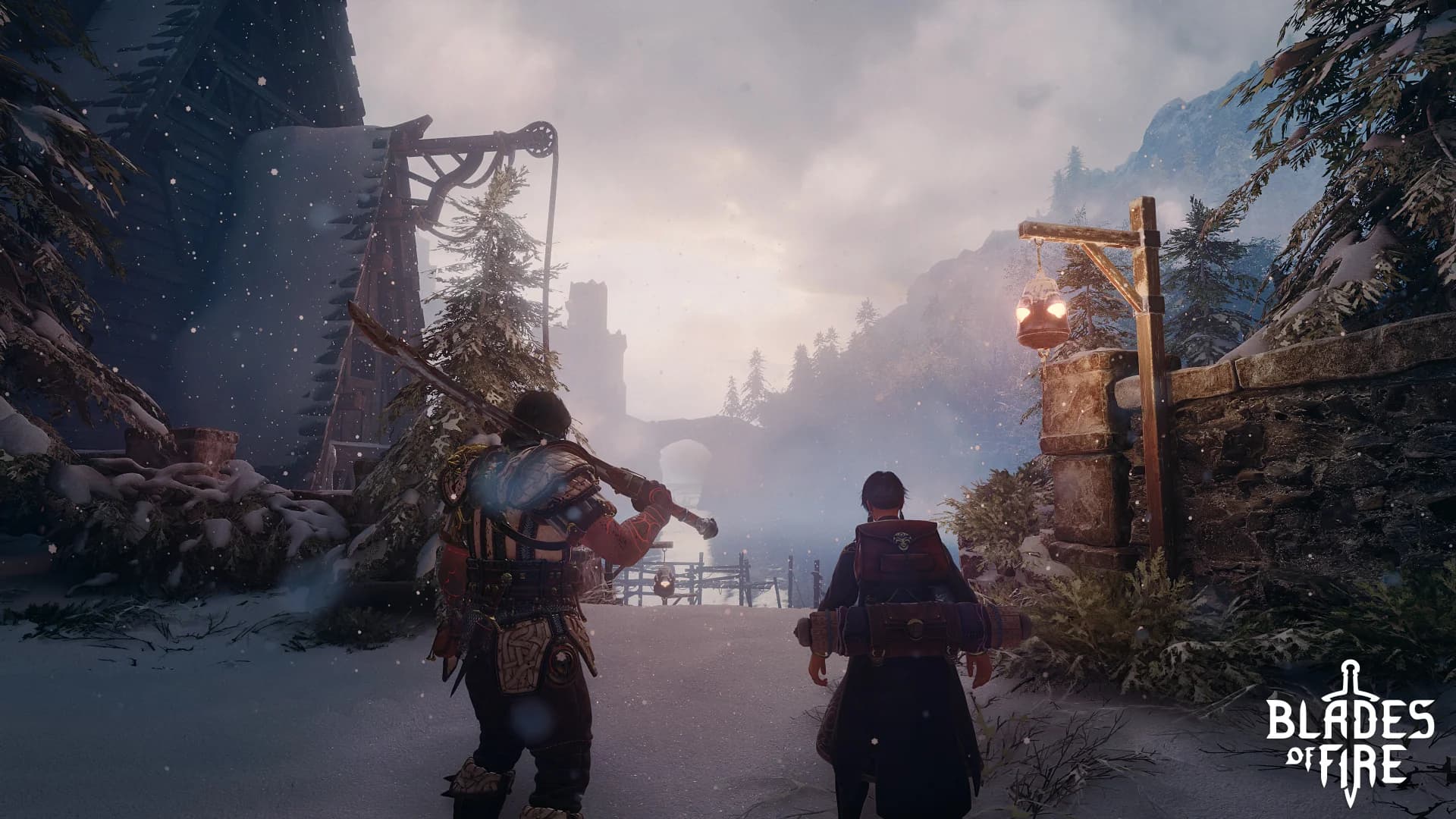

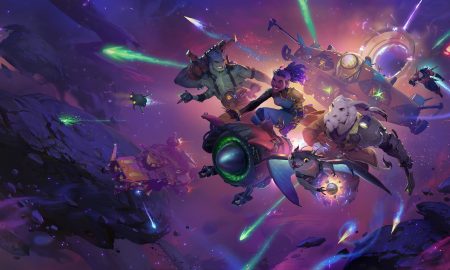




























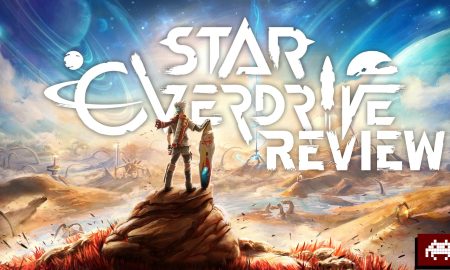
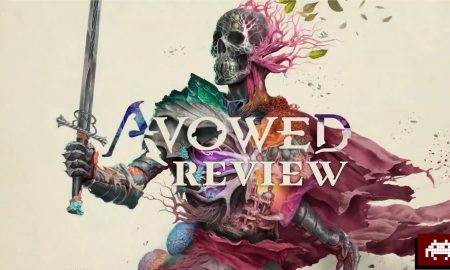

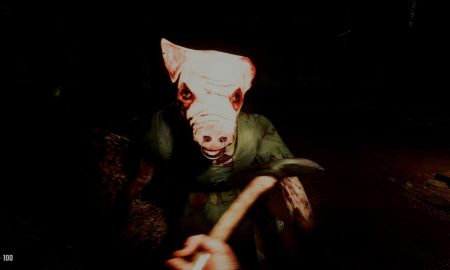
You must be logged in to post a comment Login